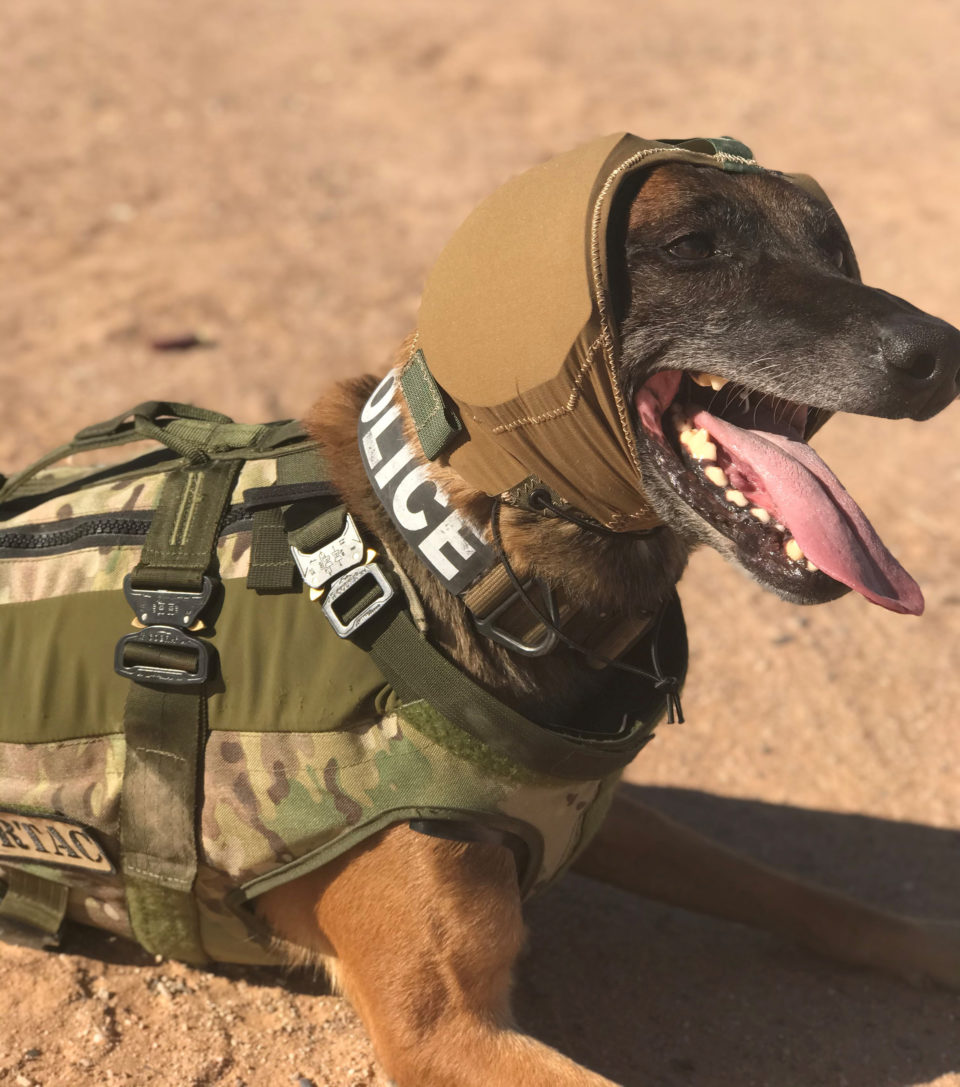Working in a loud environment is a simple annoyance for humans, but for dogs it can be much more rough.
That’s why Zeteo Tech, Inc., a venture-backed biodefense and medical device company in Sykesville, announced the development of the Canine Auditory Protection System (CAPS) last week.
CAPS offers a sound reduction technology for working dogs, serving to prevent hearing loss and extend the lives of canines. The project was supported by the U.S. Army Medical Research and Development Command as part of a Small Business Innovation Research (SBIR) program managed by the Army Research Office.
Michael McLoughlin, vice president of research at Zeteo Tech, said the idea for the CAPS formed two years ago when he was working around kennels with leading animal audiology expert Dr. Pete Scheifele of the University of Cincinnati.
“Kennels are very loud,” McLoughlin said. “They have hard walls so they tend to reflect sound. Studying dogs in kennels for long periods of time, I realized the same thing that happens to dogs happens to humans. If you’re exposed to loud noise, you experience temporary loss of hearing.”
McLoughlin collaborated with Dr. Scheifele to develop the newly launched technology.
High noise levels during training, transport and operations can lead to temporary hearing loss in working dogs. Excessive exposure can cause permanent hearing loss, reducing the dog’s working life.
“Those of us that listen to our headphones too long experience long term hearing loss,” McLoughlin said. “We realized that there was a need to do something to help dogs out, and the CAPS was the result of that.”
The CAPS uses acoustic absorption materials to maximize sound reduction. Unlike traditional hearing protection, such as earmuffs, the CAPS is constructed of flexible materials in order to adapt to the shape of any canine’s head.
The technology is designed to not only help prevent long-term hearing loss, but benefit dogs in the present as well.
“In the near-term, if the dog’s in a loud environment, then he doesn’t have the temporary hearing reduction, so he’s better able to hear commands and work with human partners,” McLoughlin said.
The style of this technology was designed to uniformly distribute the pressure required to hold the hearing protection in place, avoiding issues with straps. McLoughlin said the implementation of the technology has been surprisingly seamless.
“We thought dogs weren’t going to like having this on their head, but actually that’s a rarity,” he said. “Some of them don’t like it, but very few of them object to it.”
McLoughlin said there are potential civilian applications for this technology, too.
“Any time a dog goes with a human into a noisy environment and the human’s wearing hearing protection, the dog really ought to be, too,” McLoughlin said. “People that ride motorcycles, go to auto racing events or [fly] private planes — there are lots of cases like that where dogs outside the military could benefit.”
Join the conversation!
Find news, events, jobs and people who share your interests on Technical.ly's open community Slack

Baltimore daily roundup: Medtech made in Baltimore; Sen. Sanders visits Morgan State; Humane Ai review debate

Baltimore daily roundup: The city's new esports lab; a conference in Wilmington; GBC reports $4B of economic activity

Baltimore daily roundup: Find your next coworking space; sea turtle legislation; Dali raided and sued


